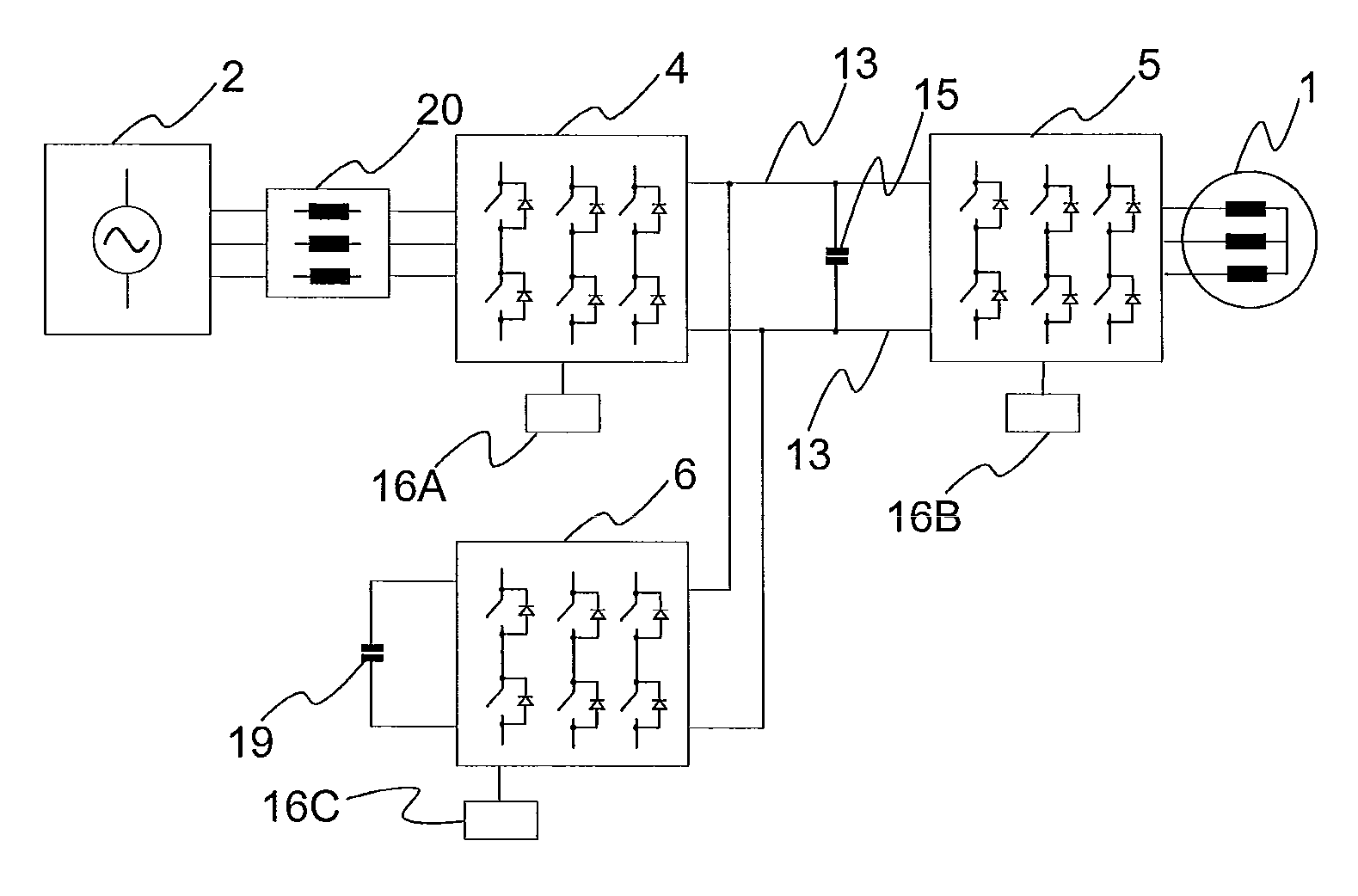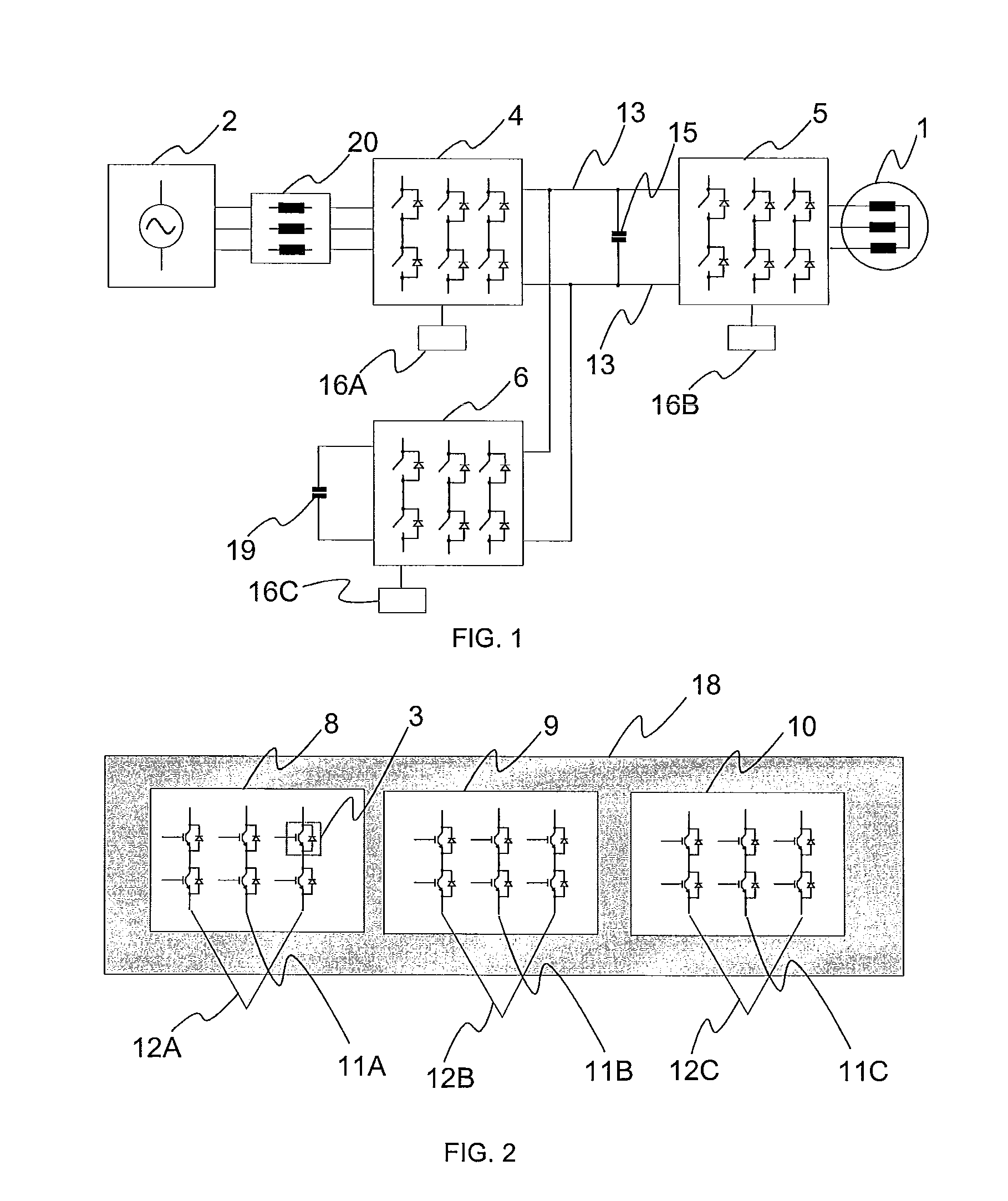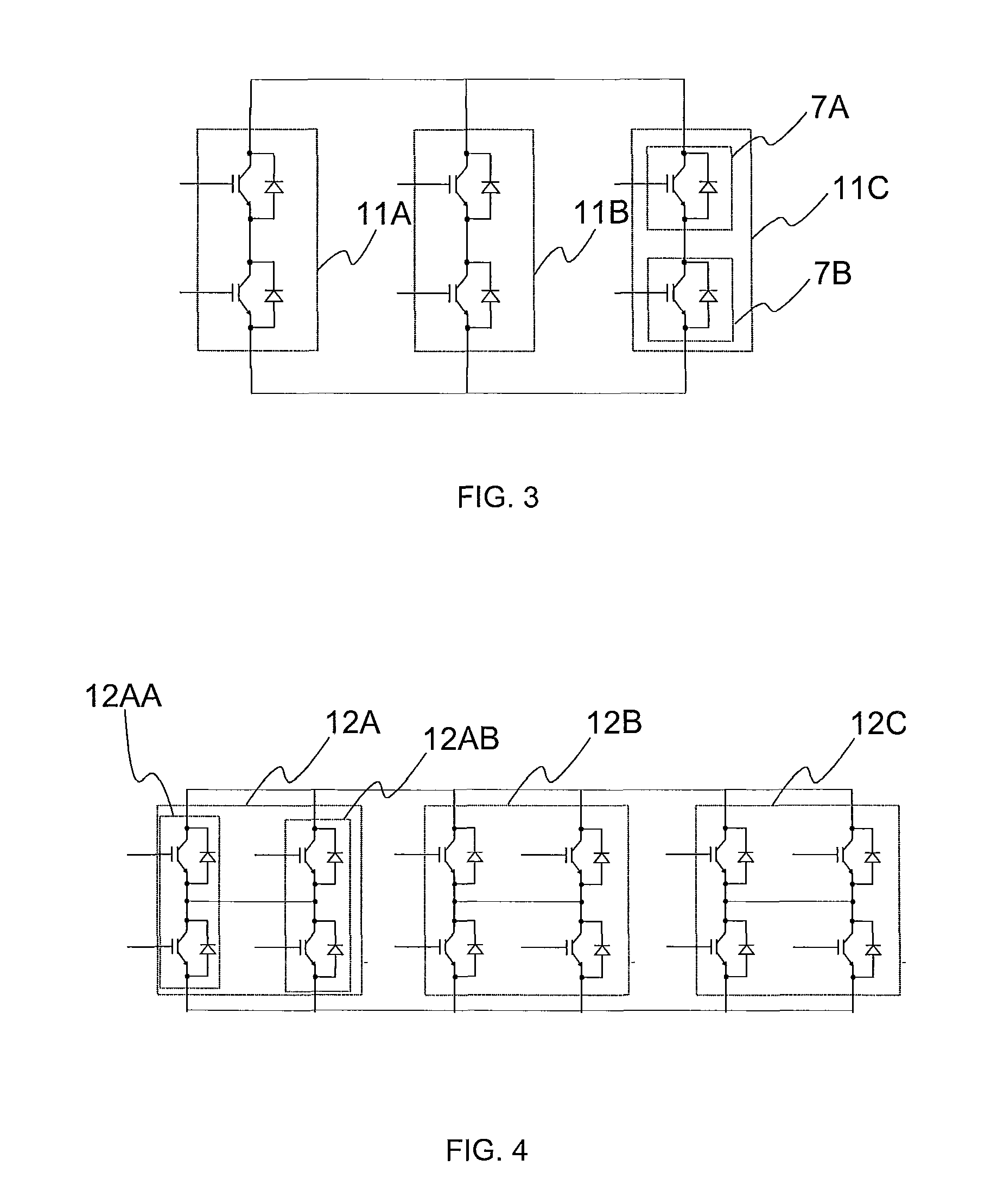Apparatus and method for controlling the motor power
a technology of motor power and apparatus, applied in the direction of electrical equipment, electric motor control, transmission systems, etc., can solve the problems of inequal distribution of power losses, conduction losses, and loss, and achieve equal power dissipation in the switch module, high power dissipation, and reduced local heating
- Summary
- Abstract
- Description
- Claims
- Application Information
AI Technical Summary
Benefits of technology
Problems solved by technology
Method used
Image
Examples
Embodiment Construction
[0049]FIG. 1 shows a power control apparatus according to the invention. The power control apparatus comprises a mains inverter 4 and, in connection with the mains inverter, an inductor unit 20. The mains inverter and an load-side inverter 5 are connected to a common direct-voltage intermediate circuit 13. The direct-voltage intermediate circuit has a capacitor 15 as an energy storage. Connected to the direct-voltage intermediate circuit is additionally a DC-DC chopper 6, which supplies energy between establish direct-voltage intermediate circuit 13 and the energy source 19. The load-side inverter 5 supplies a motor 1 with a voltage varying in frequency and amplitude. During acceleration of the motor, the power control apparatus, controlled by mains inverter control 16A, supplies power from the mains network 2 via the mains inverter 4 to the direct-voltage intermediate circuit 13 and further, controlled by load-side inverter control 16B, via the load-side inverter 5 to the motor 1. ...
PUM
 Login to View More
Login to View More Abstract
Description
Claims
Application Information
 Login to View More
Login to View More - R&D
- Intellectual Property
- Life Sciences
- Materials
- Tech Scout
- Unparalleled Data Quality
- Higher Quality Content
- 60% Fewer Hallucinations
Browse by: Latest US Patents, China's latest patents, Technical Efficacy Thesaurus, Application Domain, Technology Topic, Popular Technical Reports.
© 2025 PatSnap. All rights reserved.Legal|Privacy policy|Modern Slavery Act Transparency Statement|Sitemap|About US| Contact US: help@patsnap.com



